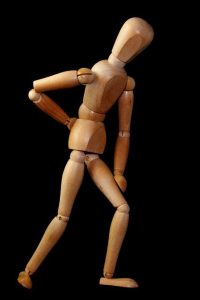Musculoskeletal Disorders
Introduction
“Musculoskeletal disorders are sprain (i.e. wrist or ankle twist or bending), strain and overuse problems which affect your body’s structure i.e. muscles, ligaments, joints, tendons and nerves that are support limbs, neck and back”.

- Tendinitis
- Rheumatoid arthritis
- Backache
- Tenosynovitis
- Osteoarthritis
- Fibromyalgia
- Slipped discs
- Bone fractures
 Simple methods of pain relief will usually alleviate the pain. However, if pain or discomfort persists, it’s highly advisable to seek professional medical advice. If you don’t focus on your workers symptoms they may begin to figure out new ways of doing their job or modifying their tools. This generally occurs because a cleaner is attempting to reduce pain and discomfort in a particular area of their body. Unfortunately, doing this puts increased strain on the rest of their joints, ligaments and nerves.
Simple methods of pain relief will usually alleviate the pain. However, if pain or discomfort persists, it’s highly advisable to seek professional medical advice. If you don’t focus on your workers symptoms they may begin to figure out new ways of doing their job or modifying their tools. This generally occurs because a cleaner is attempting to reduce pain and discomfort in a particular area of their body. Unfortunately, doing this puts increased strain on the rest of their joints, ligaments and nerves.
- Back Injuries & Back Pain: Irritations or problems with spinal muscles, nerves, bones, discs or tendons in the lumbar spine causes lower back pain that radiates / transfer to other parts of body. Lower back pain is extremely common for workers who involve in repetitive job patterns which increase due to poor postures while doing a job, standing or sitting for a long period of time, work related stress and strain, etc.

- Work-Related Upper Limb disorders (WRULD): WRULDs are work-related musculoskeletal disorders that mainly affect the neck, shoulders, forearms, elbows, wrists, hands and fingers. WRULD are mostly referred as ‘sprains’ or ‘strains’ and repetitive strain injuries.
- Other Chronic Soft-Tissue Injuries: Sudden uncontrolled and unexpected movements due to awkward positions at work mostly results in soft-tissue injuries (STI). Overuse of muscles and tendons also results in STI. Chronic soft-tissue injuries are more painful and may leave the injured with frustration and stress.
- Psychosocial: Poor work organization, poor work control, poor management, inadequate training, lack of breaks.
- Physical: Unsuitable workplaces, unsuitable equipment, exposure to vibration, exposure to hazardous substances, heavy, static and monotonous work, extreme & constrained postures and positions.
- Personal: Seniority, lifestyle, health and wellness, psychological characteristics, age, gender.
Manual Handling Activities
- Poor equipment maintenance,
- Time constraints,
- Poorly designed cleaning equipment,
- Lack of equipment,
- Forceful movements,
- Heavy physical work,
- Constant use of heavy, powered cleaning equipment.
Awkward Postures
Workers often use awkward postures knowingly or unknowingly at workplace which are as follows:
- Forceful exertions,
- Poorly designed equipment,
- Poor work organization,
- Static postures,
- Unsuitable work heights,
- Rapid hand movements,
- Continuous reaching, twisting, crouching and bending.
Poorly Designed and Maintained Equipment
- Vibrating equipment,
- Inadequate training about equipment,
- Poorly designed equipment,
- Poor work organization,
- Poorly maintained equipment,
- Forceful movements.
Poor Work Organization
- Inadequate training,
- Lack of control of work,
- Poor work organization,
- high workload and time constraints,
- Poor work schedules,
- Role conflicts,
- High speed and intensity work,
- Appreciation to workers.
Directors & Managers

- Implement systems to enable workers to work safely and compliance of H&S regulations.
- Implement system for assessment of manual handing and other hazards.
- Implement accident reporting systems.
- Implement workplace monitoring and health surveillance.
- Perform regular risk assessments and review them periodically.
- Consult with professional safety representatives regarding company’s Risk Assessment and training.
- Ensure all worker are properly trained, instructed and periodically re-trained to check their competency.
- Implement and monitor Safe System of Work.
- Inform, instruct and train your worker regarding health, safety and accident reporting systems.
- Ensure there are sufficient equipment and tools available to work efficiently and safely.
- Ensure proper use of equipment and personal protective equipment.
- Ensure completion / liquidation of worker’s complaints (i.e. equipment, controls, work practices, work-related ill-health, incidents or accidents, etc.).
- Conduct proper investigations post reported by any worker.



Dear Reader / Aspirants,
Safety Pedagogy welcomes your comments which:
1. Motivates us to grow this platform,
2. Direct / Guide us to move ahead,
3. Evaluation pertaining to article's discrepancies,
4. To connect each aspirants together,
So please do comment & Follow us…..
Thank You…..
Insightful post! I appreciate the thorough analysis and the tips provided. Thanks for sharing.